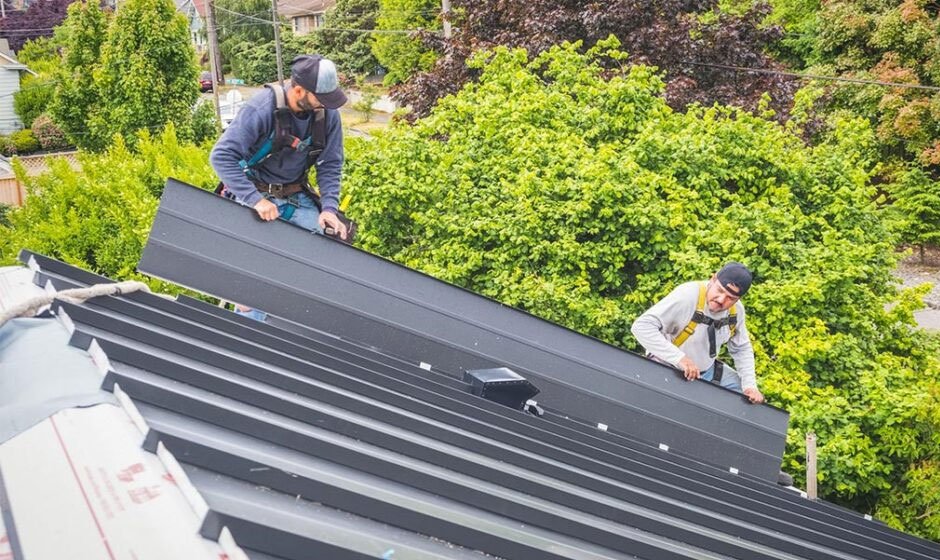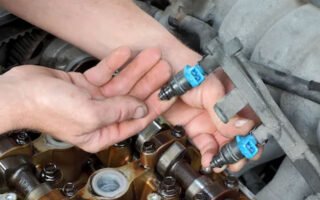When it comes to roofing materials, metal roofs are rapidly gaining popularity among homeowners and builders. Known for their durability, sustainability, and unique style, metal roofs offer a range of benefits that make them an excellent choice for residential and commercial properties alike. If you’re considering a roofing upgrade or building a new home, here are the top benefits of choosing a metal roof.
1. Exceptional Durability
One of the most compelling reasons to choose a metal roof is its exceptional durability. While traditional asphalt shingles can wear out in 15 to 20 years, a well-installed metal roof can last 40 to 70 years or more. Metal roofs are highly resistant to harsh weather conditions, including high winds, heavy snow, rain, and even hail.
They do not rot, crack, or warp like other materials, making them an ideal choice for areas prone to extreme weather. This durability translates to fewer repairs and lower maintenance costs over time.
2. Energy Efficiency
Metal roofs are highly effective at reflecting solar radiant heat, which can lower cooling expenses by 10% to 25%. This reflective quality helps keep homes cooler during the summer by minimizing the amount of heat absorbed into the structure. Many metal roofing systems also feature specialized coatings that boost energy efficiency by enhancing their reflective properties even further.
For homeowners in warmer climates, this can be a significant benefit, leading to reduced energy consumption and lower utility bills. Additionally, incorporating foam closure strips with metal roofing helps seal gaps, improving insulation and preventing air leaks, further contributing to energy savings.
3. Eco-Friendliness
Metal roofing is one of the most environmentally friendly roofing materials available. Most metal roofs are made from recycled materials, and they are also 100% recyclable at the end of their life. In contrast, traditional asphalt shingles contribute significantly to landfill waste.
By choosing a metal roof, you’re not only reducing waste but also contributing to sustainable building practices. Furthermore, the long lifespan of metal roofs means fewer replacements, which conserves resources and reduces the environmental impact over time.
4. Low Maintenance
While all roofing materials require some degree of upkeep, metal roofs demand far less maintenance compared to other roofing types. Unlike wood shingles that can develop mold, mildew, or insect damage, metal roofs are naturally resistant to these issues. Additionally, they don’t require periodic sealing, painting, or treatments.
Routine maintenance for a metal roof generally includes clearing debris from gutters and ensuring the roof is free from dirt and leaves. This low maintenance requirement adds to the long-term cost savings associated with metal roofing.
5. Increased Home Value
Installing a metal roof can significantly increase the value of your home. Many buyers view metal roofing as a premium option due to its longevity, low maintenance, and energy efficiency benefits. It is also viewed favorably by appraisers, which can enhance your home’s resale value. In some cases, homeowners can recoup up to 85% of their metal roofing investment upon resale, making it a wise financial choice for those looking to upgrade their property.
6. Aesthetic Appeal and Versatility
Gone are the days when metal roofs were limited to a basic industrial look. Today’s metal roofing comes in a wide variety of colors, styles, and finishes to complement any architectural design. Whether you prefer the look of traditional shingles, tiles, or even slate, there is likely a metal roofing option that will match your aesthetic preferences.
Metal roofs can provide a modern, sleek appearance or mimic more traditional roofing styles, allowing you to enhance the curb appeal of your home while still enjoying the advantages of metal.
7. Fire Resistance
Safety is a top priority for any homeowner, and metal roofs offer a high level of fire resistance. Metal is a non-combustible material and is often rated with a Class A fire-resistance rating, the highest possible rating. This makes metal roofing an especially good choice in areas that are susceptible to wildfires. While the underlying materials of the roof structure may still be flammable, a metal roof can provide a valuable barrier that reduces the risk of fire spreading.
8. Lightweight Material
Despite their strength and durability, metal roofs are surprisingly lightweight compared to other roofing materials like tile or slate. This can be a significant advantage during installation, as it often eliminates the need for additional structural support. A lighter roof also reduces the overall stress on a building’s foundation, which can be beneficial in areas prone to earthquakes or where building integrity is a concern.
9. Snow and Ice Shedding
In colder climates, snow and ice can accumulate on roofs, leading to potential damage or leaks. Metal roofs are naturally slippery, allowing snow and ice to slide off more easily than on other materials. Some metal roofs are designed with specialized coatings to further facilitate this shedding process, reducing the risk of ice dams and related damage. This property is particularly advantageous in areas with heavy snowfall, as it helps maintain the roof’s integrity and reduces maintenance.
In Conclusion
Choosing a metal roof offers a host of benefits that extend beyond traditional roofing materials. Its durability, energy efficiency, low maintenance, and environmental friendliness make it a smart investment for homeowners looking to enhance their property’s value and performance. With various styles and finishes available, a metal roof can provide both aesthetic appeal and functional advantages, ensuring your home stays protected and stylish for decades to come.
Whether you’re replacing an old roof or building new, considering the long-term benefits of a metal roof can help you make an informed decision that pays off in the years ahead.



